Practical Ideas for Incorporating STEAM Concepts into Play
What if we could turn ordinary moments into extraordinary learning adventures? With a dash of creativity, we can infuse science, technology, engineering, art and maths concepts into children's play-based explorations.
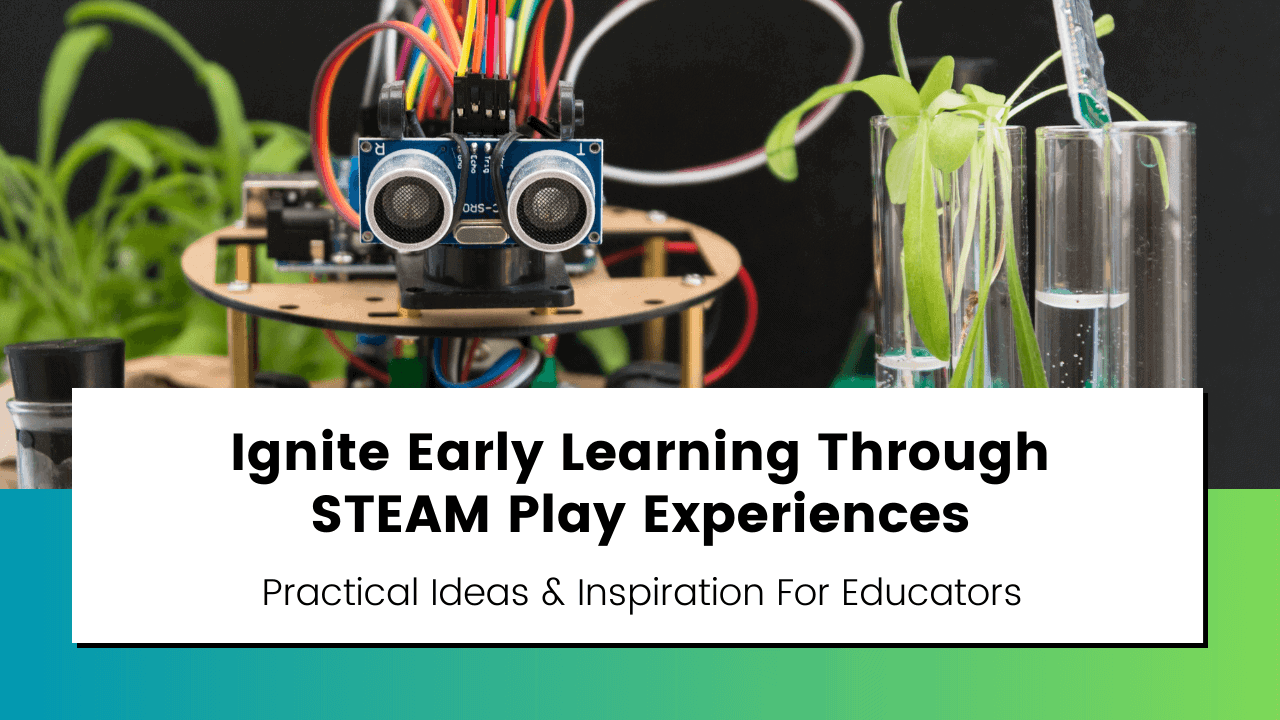
No need for fancy gadgets or formal lessons - Simple interactive STEAM play allows children's natural curiosity to flourish and investigating concepts through real-life application builds critical thinking and problem-solving skills.
It also promotes development across domains including cognitive, fine motor, language, and social-emotional abilities.
In this post I reveal hands-on STEAM activity ideas that will spark young children's natural curiosity and motivation to learn - and they won’t take you ages to set up or require you to buy expensive materials!
Let’s take a look at just some of the possibilities I’ve gathered for you to try - I’ve included a little something for everyone, no matter the children’s age group, the type of early education setting or the budget you have for materials.

Keep in mind that not all of the ideas I’m sharing with you are suitable for every child or educator…YOU know the developmental stage and interests of your children the best so please keep that in mind when choosing activities.
Ready for some inspiration? Let’s dive in…
Playful Science Discoveries Await
Outdoor explorations, gardening activities, and hands-on science experiments ignite curiosity. Here are a few simple but engaging ways educators can foster scientific inquiry for young children:

Exploring Nature Through A STEAM lens...

- 1
Go on a walk in your outdoor area and observe creatures and plants up close. Show children how to photograph natural finds that capture their attention. Use books later to identify these treasures and learn more together.
- 2Provide shovels, sifters and digging tools for excavating sand and dirt. Magnifying glasses reveal an unseen world of rocks, sticks, leaves and bugs.
- 3Plant bean or marigold seeds and track growth on a chart. Monitor changes and discuss what sprouting plants need to thrive. Eat edible plants together.
- 4Visit farms or zoos if possible in your area to observe animals in natural habitats. Back in your early learning environment, set up related dramatic play areas like a veterinarian clinic or nature centre.
- 5Go on colour hunts outdoors to find things that are blue, yellow, green, red and more.
- 6
Make binoculars together from paper towel tubes for outdoor nature exploration.

Playful Science Experiments...
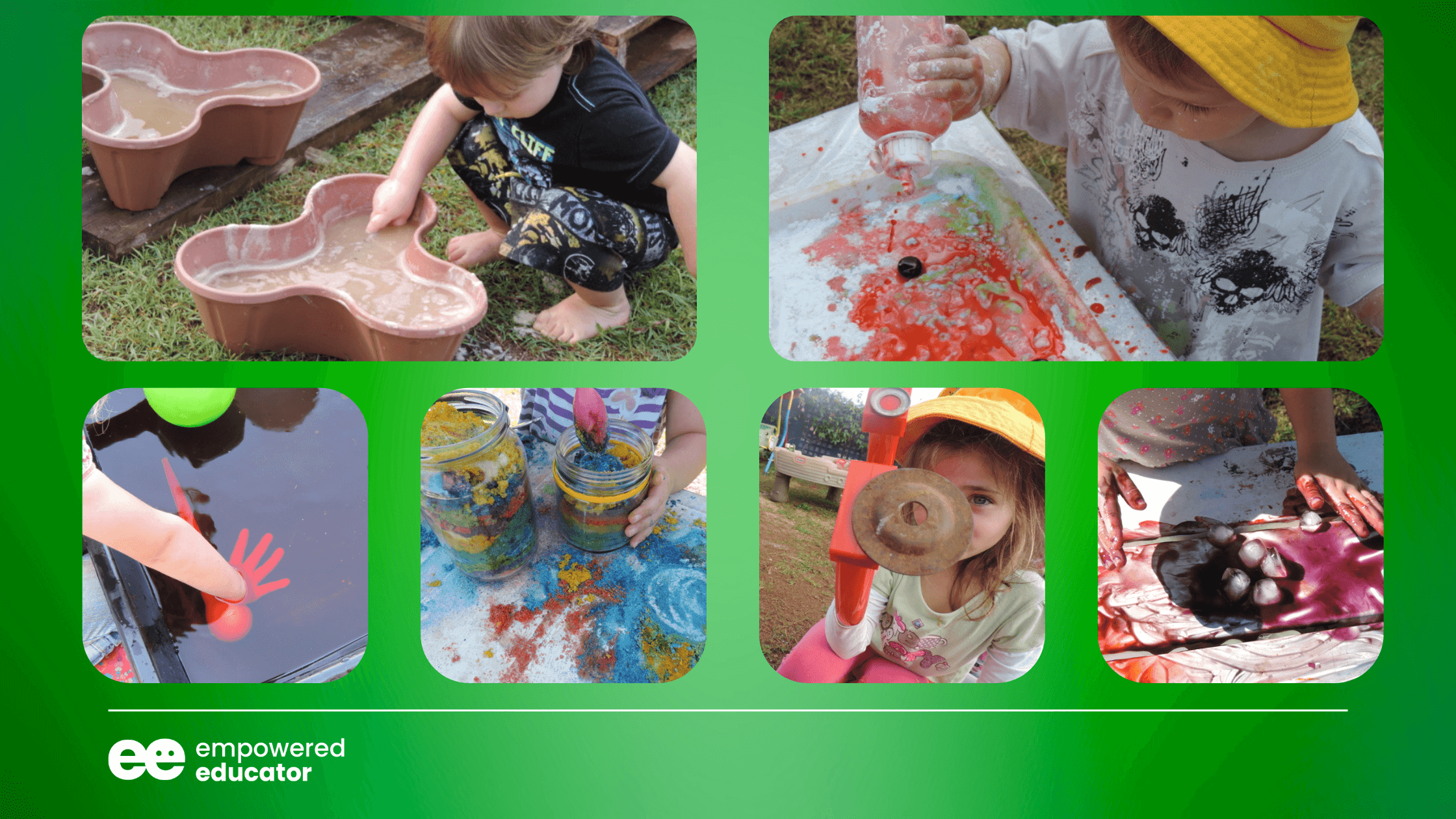

- 1
Mix colours using paint, food dye and water to reveal secondary colours. Watch solids melt into liquid and discuss changes in state of matter.
- 2
Conduct sink vs. float tests and categorise items by properties that make them sink or swim.
- 3

- 4
Provide pots and pans, wooden spoons, funnels, and water for splash and pour sensory play outside.

- 5
Provide scientific tools like ramps, gears, and prisms for hands-on tinkering and self-guided discovery.

- 6
Make mud paint by mixing dirt and water. Provide sticks for drawing and painting.
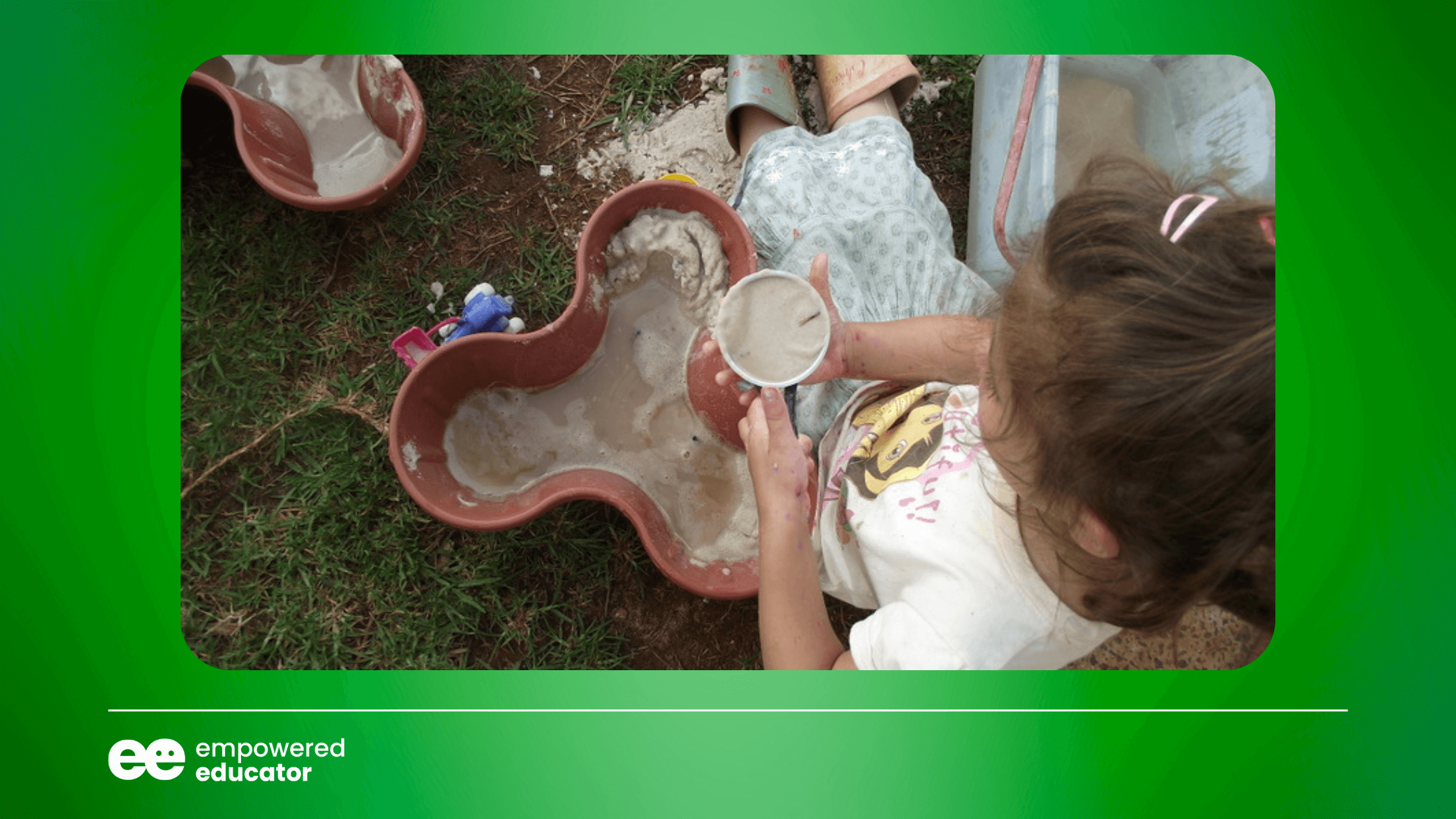
Playful Science Games To Stimulate Early Learning…

- 1
Read interactive concept books on weather, seasons and life cycles. Use interesting props and dramatisation together to act out key ideas.

- 2Play matching and memory games with images of animals, plants, shapes and science tools to build vocabulary.
- 3Send children on nature scavenger hunts to reinforce concepts like finding specified leaves, seeds or sticks.
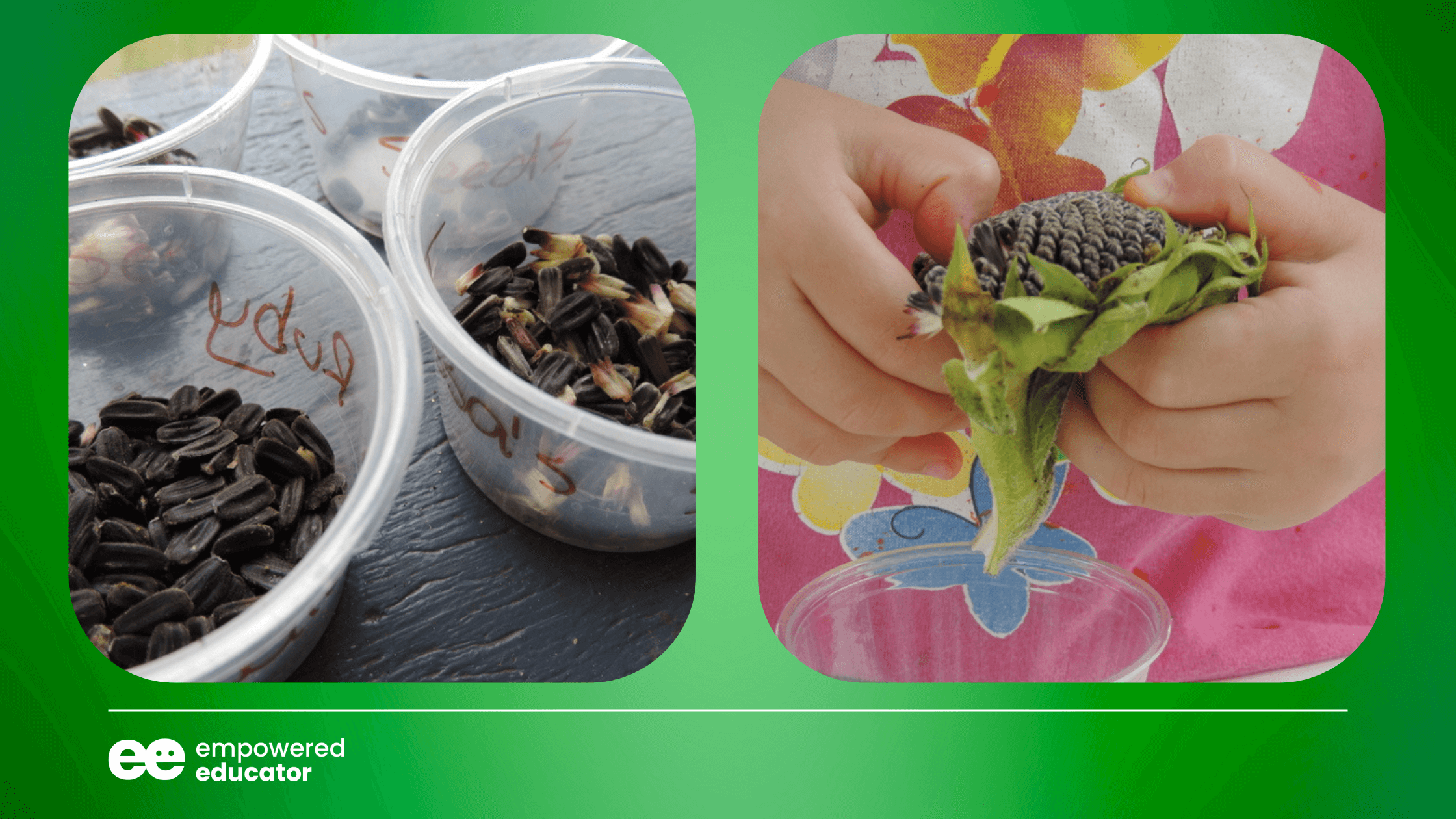
The possibilities for science discovery through play really are endless! What are your favourite ways to facilitate outdoor explorations, experiments and games? Our goal as early childhood educators is to make learning about simple science concepts active, tactile and exhilarating.
Technology Tools for Inquisitive Minds
Technology can spark children's curiosity while offering interactive learning experiences and developmentally appropriate tech activities promote early STEAM skills. Here's a few ideas to incorporate into your planning:
Incorporate Everyday Tech Devices Into Play

- 1
Provide cameras for documenting structures, artwork and nature finds. Display photos to revisit and discuss creations and discoveries.
- 2Listen and dance to music from around the world. Use scarves, maracas, etc.
- 3Dramatic play with old mobile phones, kitchen gadgets, keyboards and cash registers encourage real-life roleplaying.
- 4Introduce tablets, keyboards and trackpads for gaining digital literacy through stories and drawings.
- 5
Incorporate play and real tools like drills, hammers , nuts and bolts. Guide and supervise children for safety.
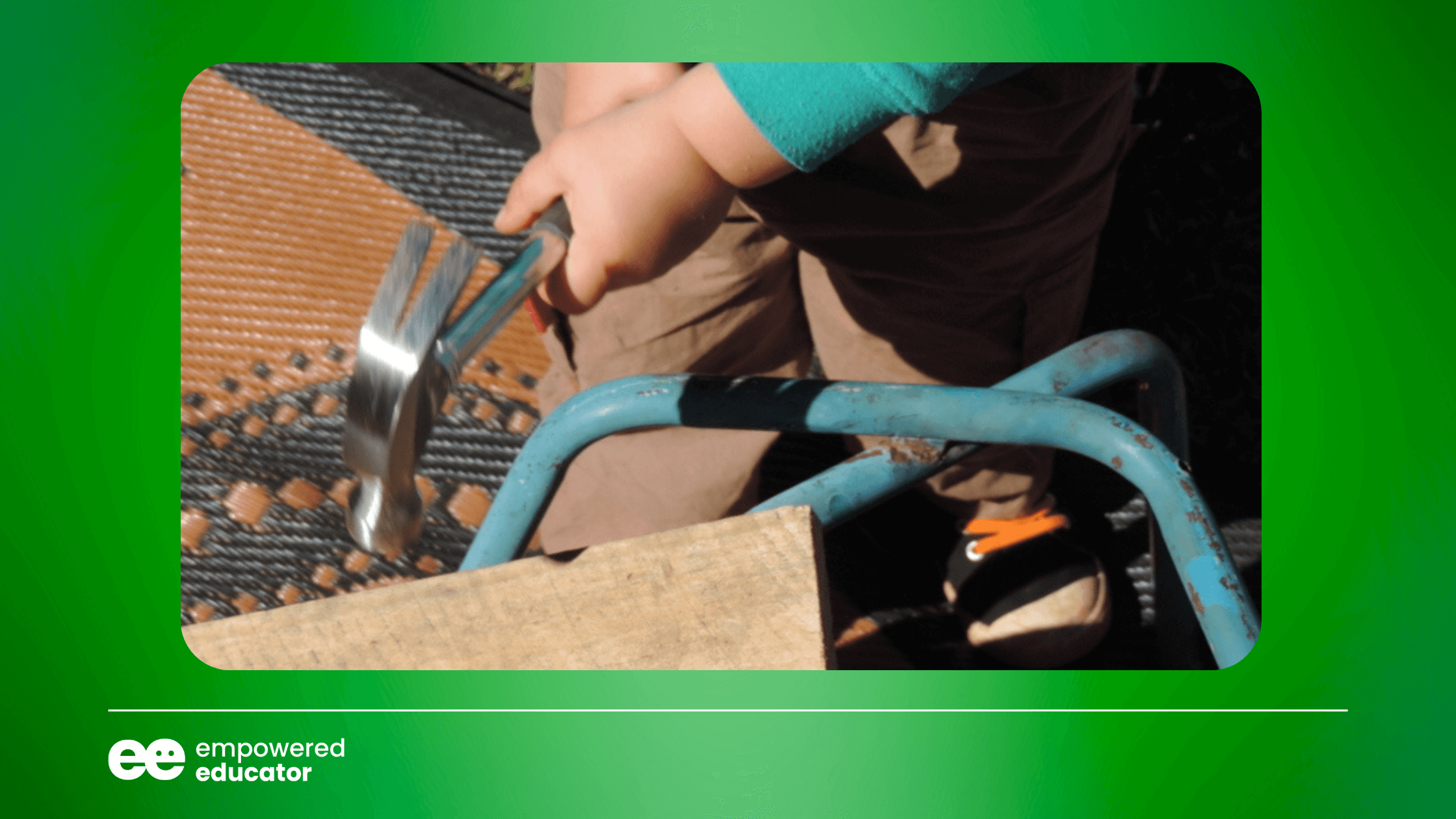

Coding Games and Toys That Ignite Thinking & Problem Solving
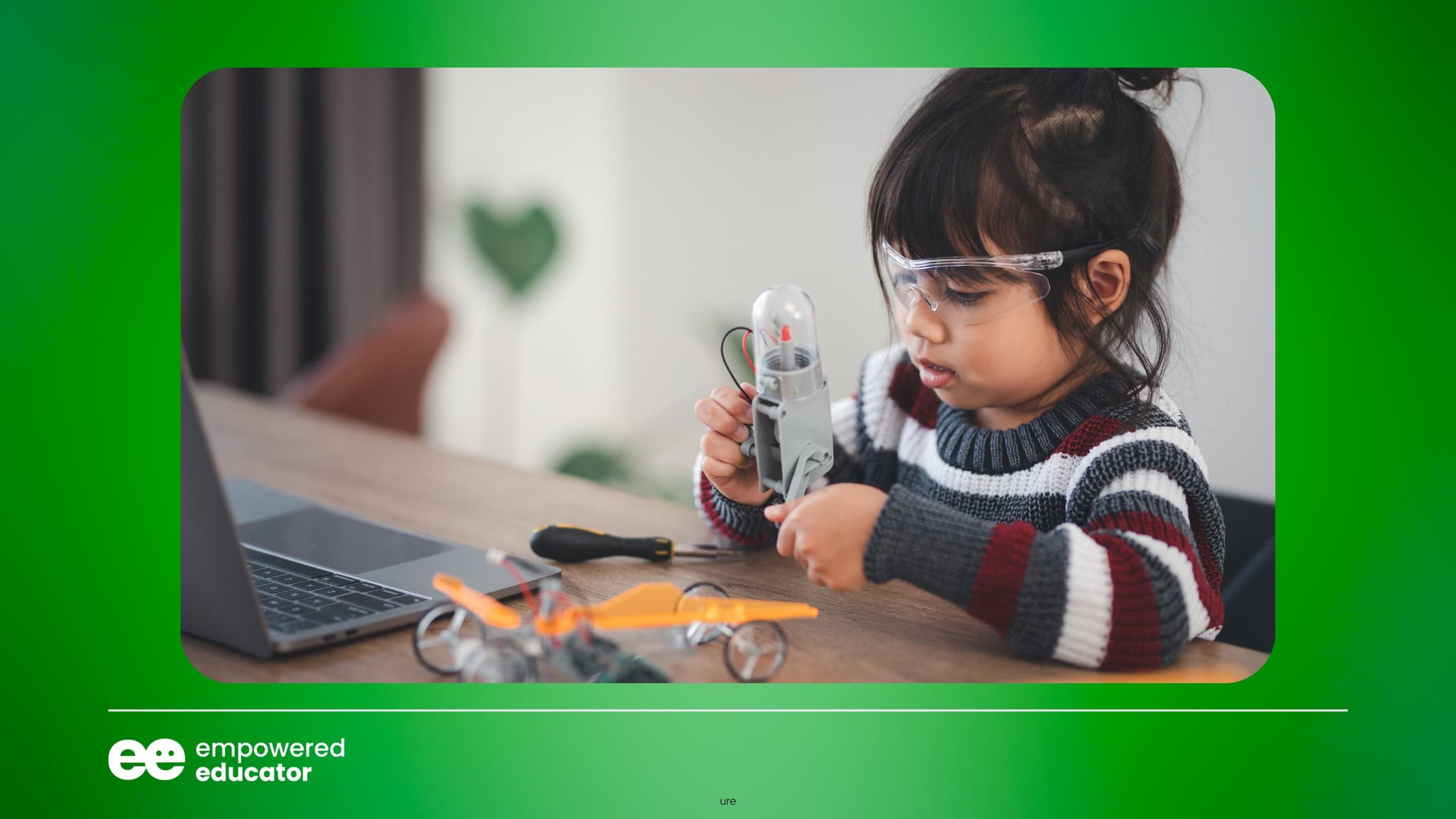
- 1
Direct programmable robots using buttons or block codes. Start on ground mats until coordination develops.
- 2Match sequenced puzzle pieces or arrange patterned blocks to grasp programming basics.
- 3Let children explore cause and effect toys like pop-up pets or simple robot toys with buttons.
- 4
Try age-appropriate apps introducing coding foundations through animated interactions.
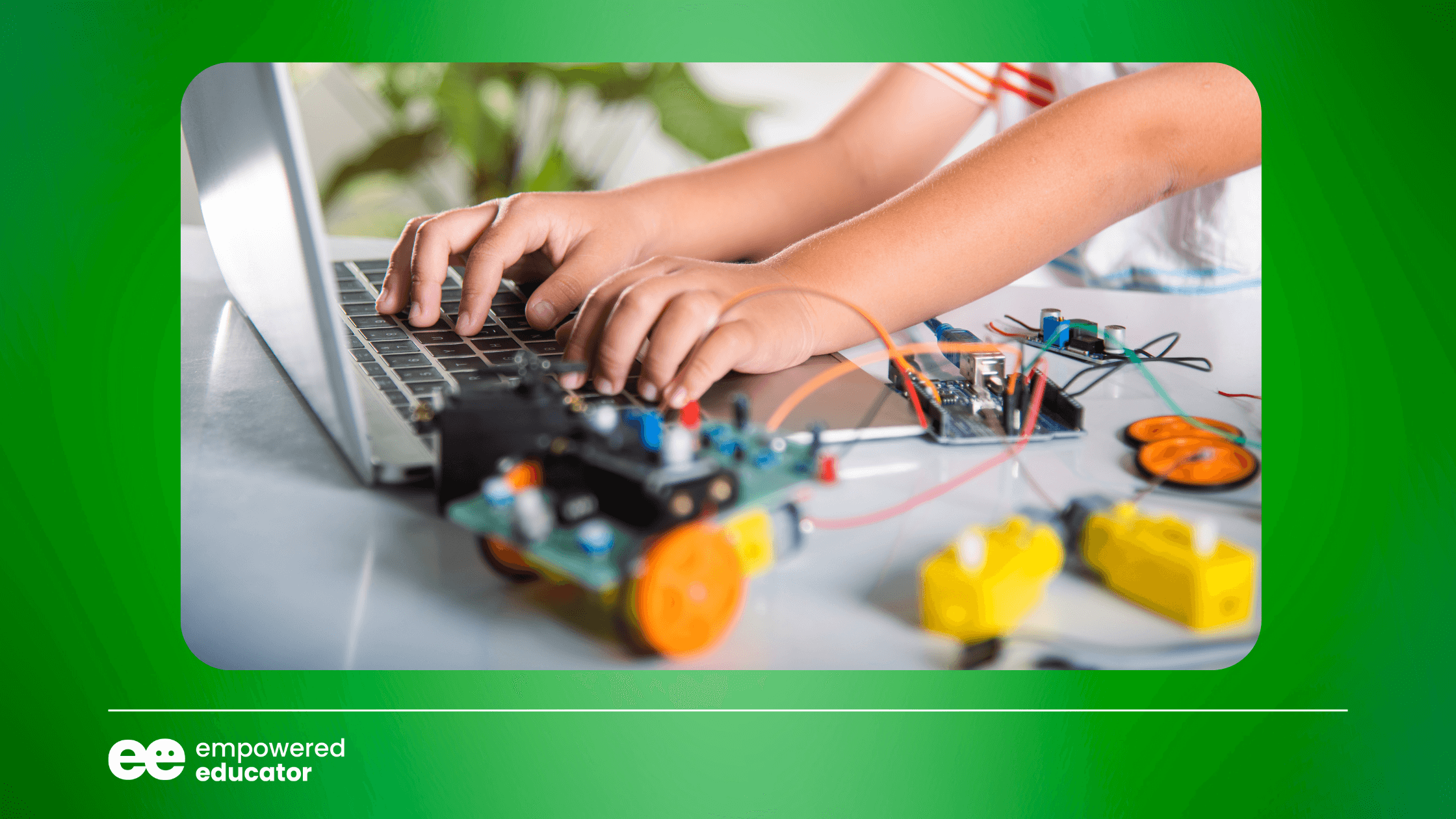
Exploring Media Creation & Mediums

- 1
Produce play scenario videos using tablets and narrate children's actions to expand language.
- 2Provide drawing/painting apps and styluses to refine fine motor skills.
- 3Build narrative skills by creating animated story scenes and programming sequences.
- 4Record children recounting stories or processes. Play back to build metacognition.
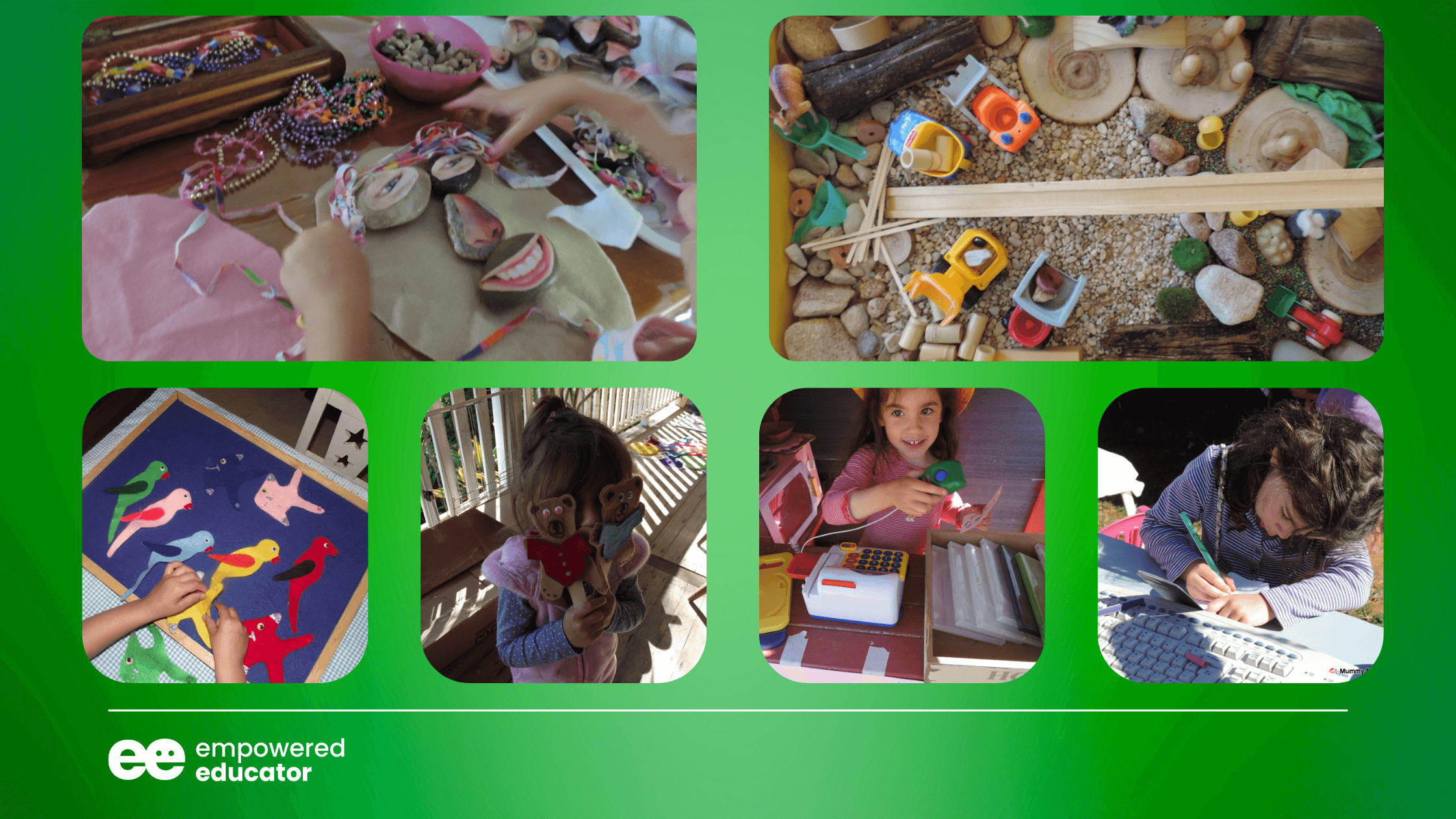
Think about some of the ways you might incorporate technology into learning in developmentally appropriate ways for your children. Could one of these ideas work for you?

Engineering: Tinkering Through Challenges
Engineering play promotes critical thinking, creative problem solving, and perseverance.
Tinkering, building, and testing teach iterative design improvements and provide opportunities for children to expand their skills and think critically. To lead their own learning.
Building Structures, Balance & Creativity

- 1
Provide blocks, Lego pieces, and magnet tiles for constructing towers, bridges, and unique structures.

- 2Set out cardboard boxes and tubes for children to invent imaginative forts. Celebrate completed creations.
- 3Add ramps, pulleys, gears, and ropes for experimenting with objects in motion. Discuss cause and effect.
- 4Build ramps using cardboard and books for rolling balls.
- 5
Construct "roads" using painter's tape on the floor. Use toy cars and blocks.

Troubleshooting and Innovation

- 1
Allow supervised disassembly of broken appliances to see inside workings.

- 2Pose challenges like building a marble run. Have children redesign solutions (I did this recently with a preschool group and they were so engaged and provided some very funny, clever ideas and suggestions!)
- 3Provide loose parts and ask open-ended questions to encourage innovations.
- 4Supply blocks or soft bricks for simple stacking and building
- 5
Give paper towel tubes and tape for basic connecting and construction.
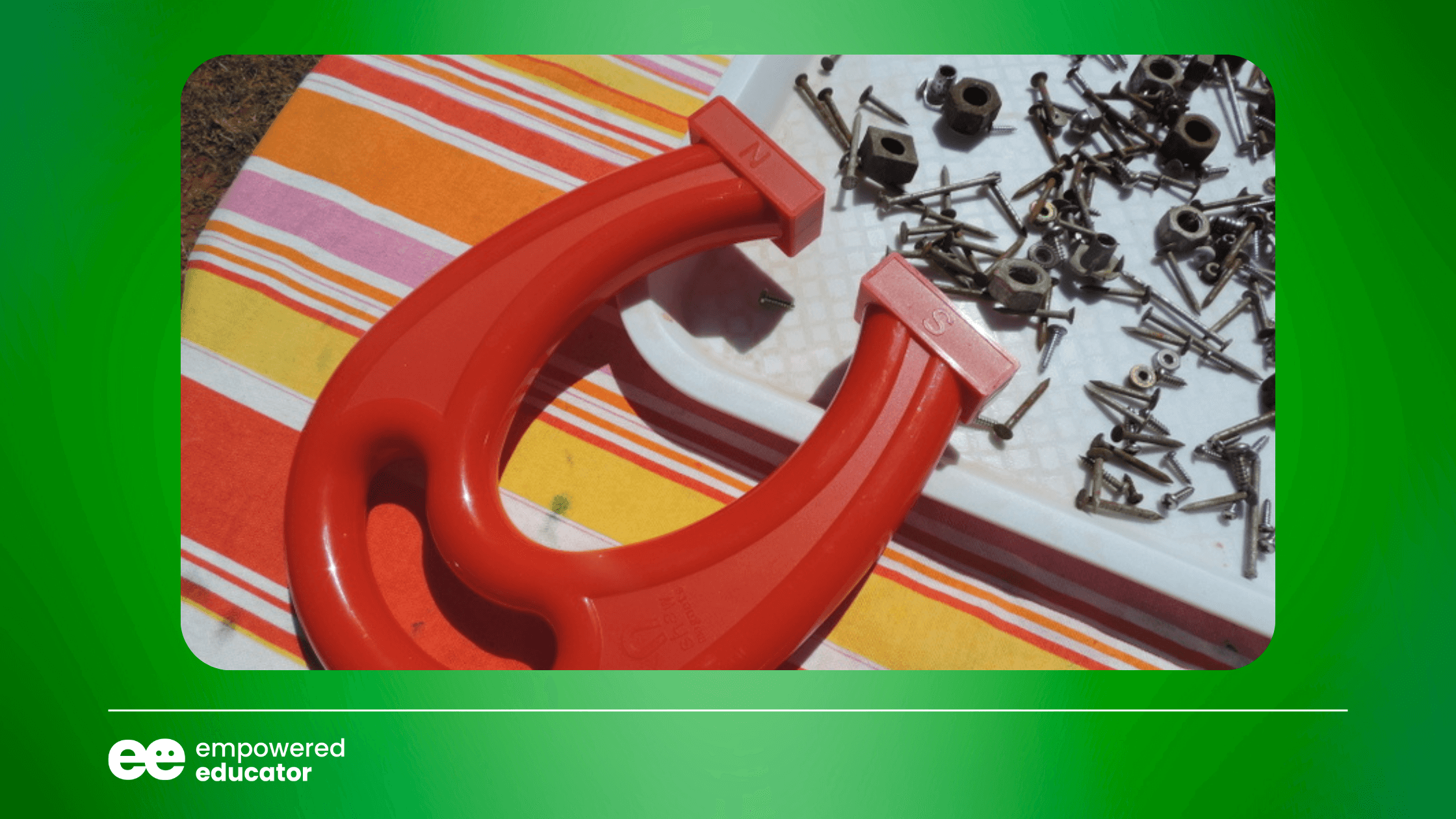
Testing Creations
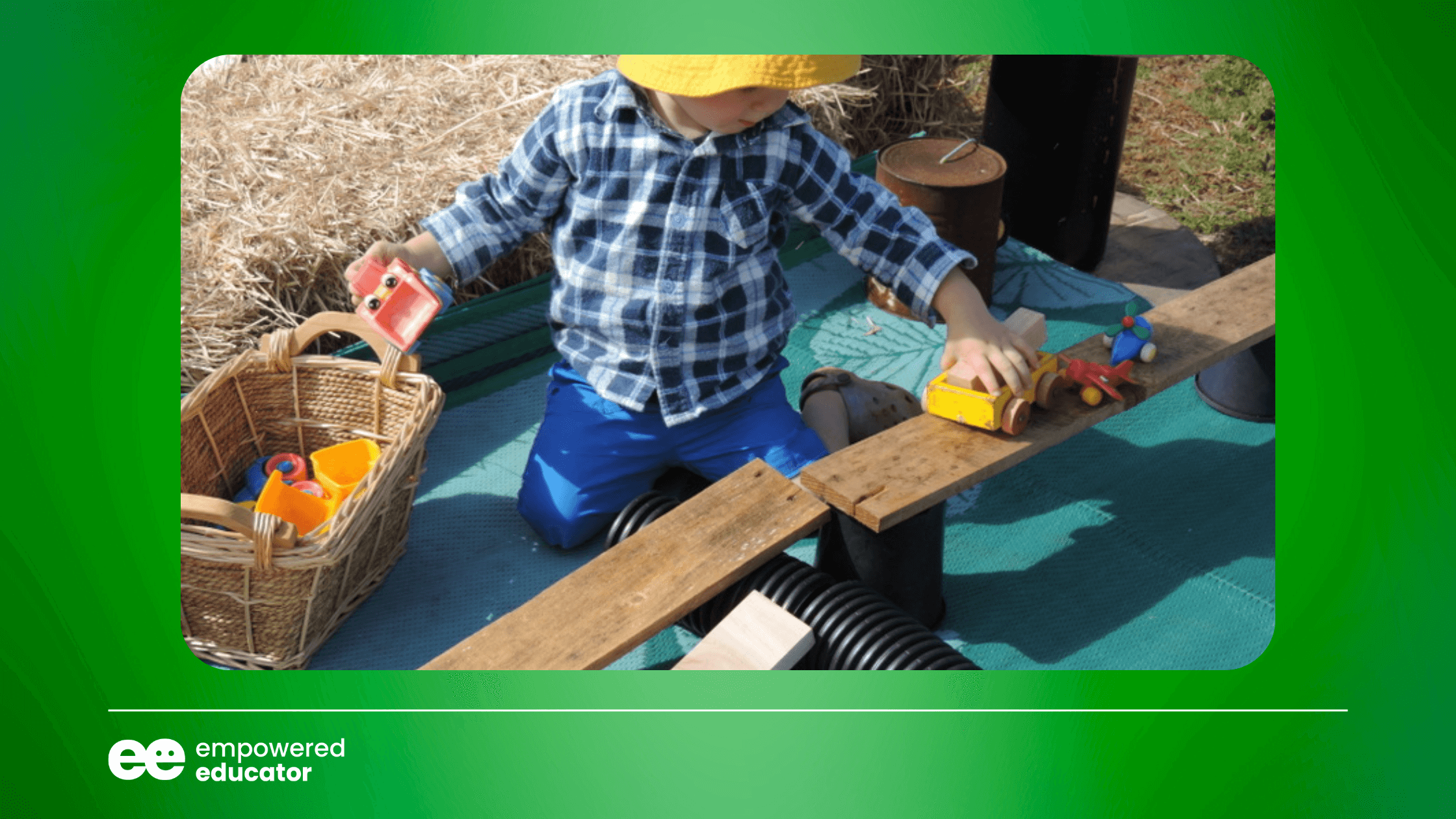
- 1Encourage children to draw diagrams of inventions and provide grid paper and rulers.
- 2Use recyclables to construct prototypes. Embellish with art scraps.
- 3Test strength of materials and structures through hands-on building and making. Allow failures.

How could you engage young children in the engineering design process?
The Colourful World of Artistic Play
Artistic play builds creativity, self-expression, and sensory processing and providing opportunities for children to get creative with open-ended art activities strengthens flexible thinking, fine motor skills, and problem solving.
You no doubt offer children some sort of creative experience each day but have you thought about the STEAM learning outcomes and intentional teaching possibilities that can also occur through this play?
Sensory Art Experiences

- 1Fingerpaint to sculpt, swirl, and blend colours.
- 2
Use squirt bottles for large-scale mural painting outdoors.

- 3Squeeze, pour, and mould coloured rice, sand, oobleck, or cloud dough.
- 4Control dropper art colour mixing using eye droppers and liquid watercolours.

Building and Tinkering

- 1
Construct imaginative sculptures from scrap materials like cardboard and fabric.
- 2Invent new purposes for cardboard boxes like cars or rockets.
- 3
Make musical shakers from decorated containers and items like beans or buttons
- 4Build sculptures using play dough and toothpicks.
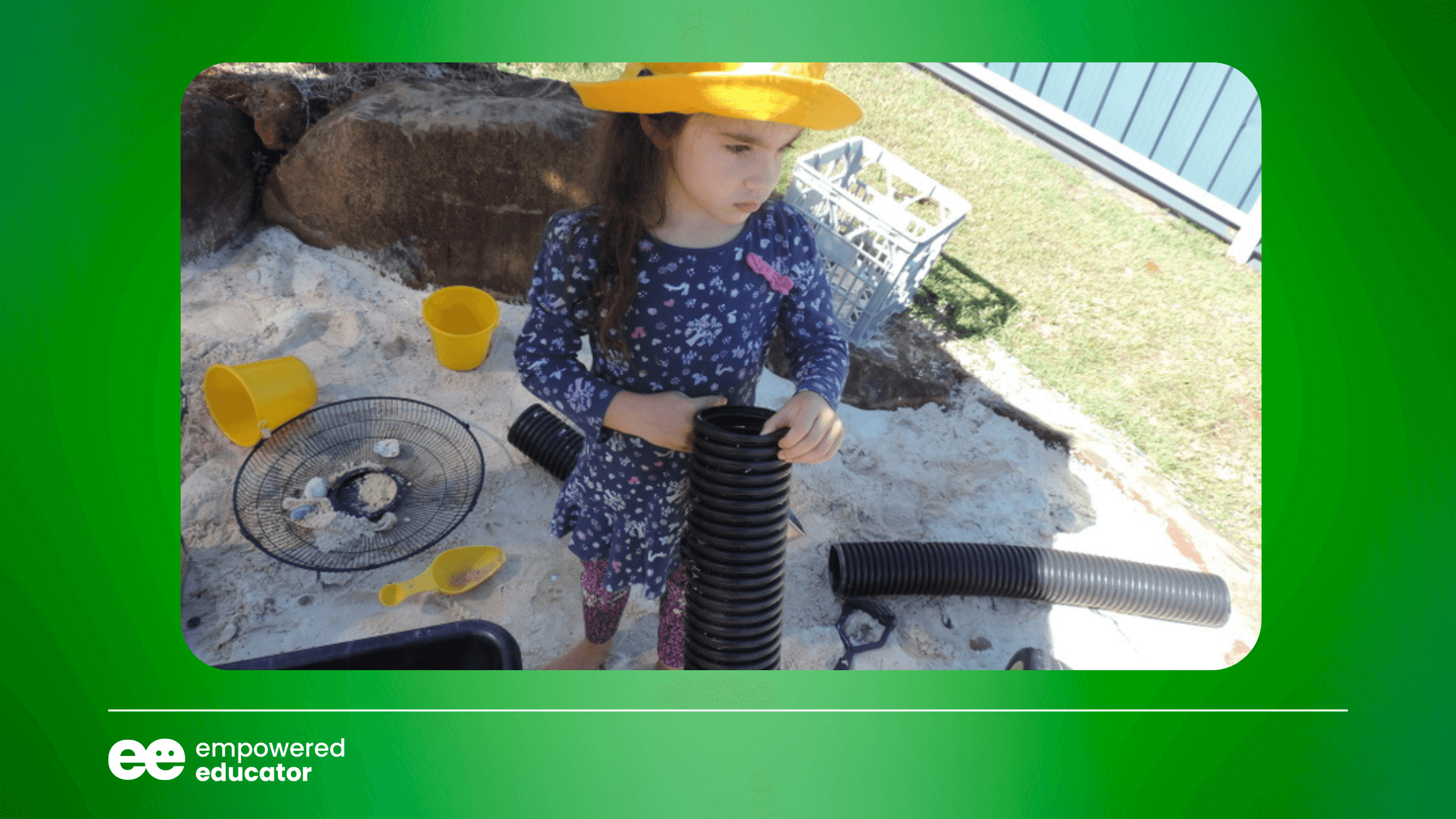
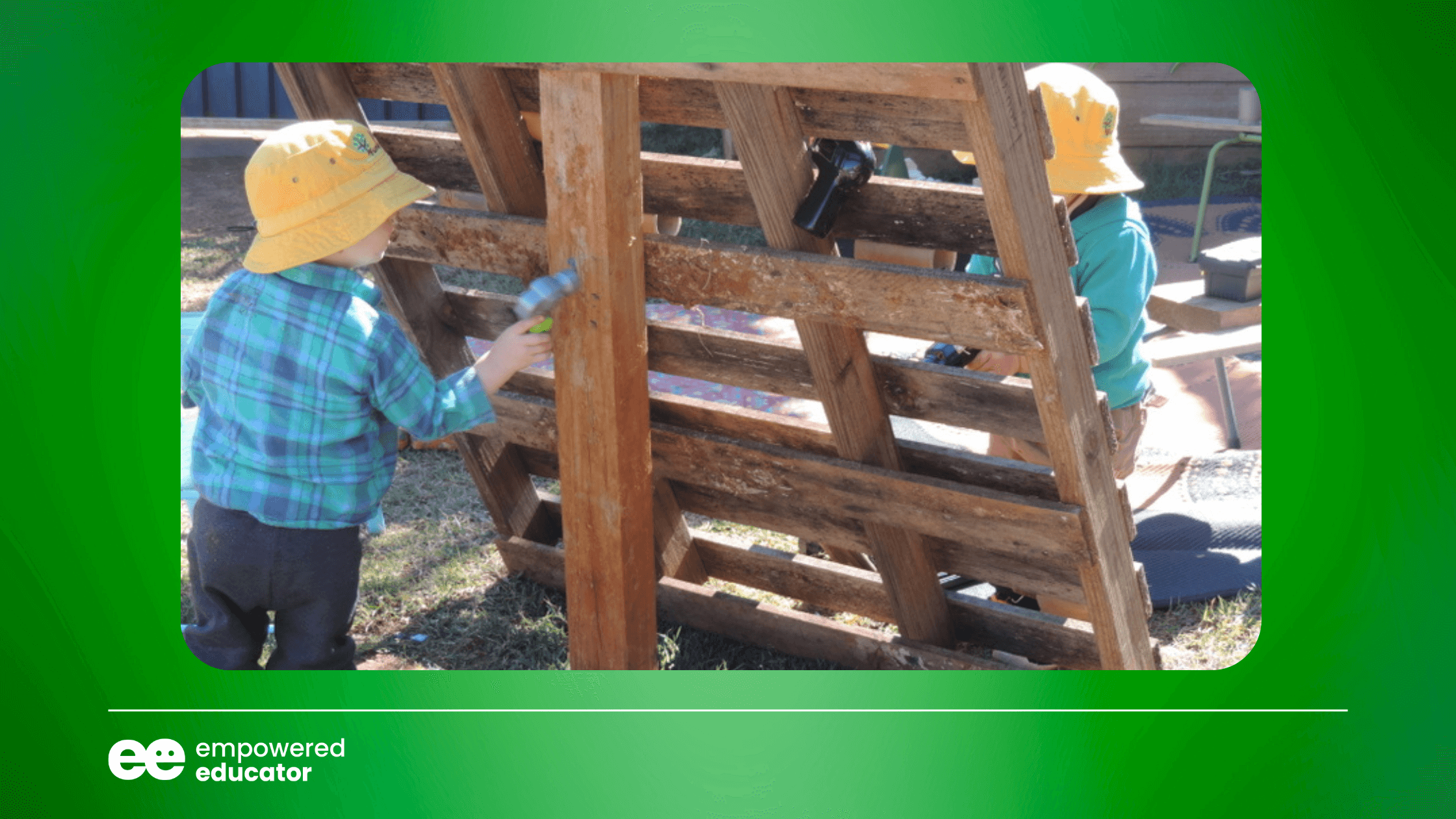
Maths Play: Everyday Investigations
Playful, hands-on maths explorations allow children to actively construct numeracy concepts. Everyday interactions and child led play can present many authentic opportunities to count, compare, pattern, and problem solve.
Let’s take a look at a few ideas…
Counting and Comparing

- 1
Chant rhymes as children count objects, steps, and fingers. Introduce patterns.
- 2Sing counting songs while using hand puppets or finger puppets.
- 3Sort collections of buttons, pasta, or shells by size, shape, and colour. Reinforce descriptors.
- 4Use balance scales to compare weights of objects. Use terms like heavier vs. lighter.
- 5Count steps together as you walk or climb stairs.


Relationships and Patterns

- 1
Create simple bead or clapping patterns. Increase complexity as children are ready.
- 2Use songs and games to build understanding of positional words and directions.
- 3Go on shape hunts and trace shapes found on paper.
- 4Identify and match shapes on simple wooden puzzles or toys.
- 5
Notice patterns in nature like stripes on bees, spirals on pinecones, symmetry in flowers. Replicate using art materials.
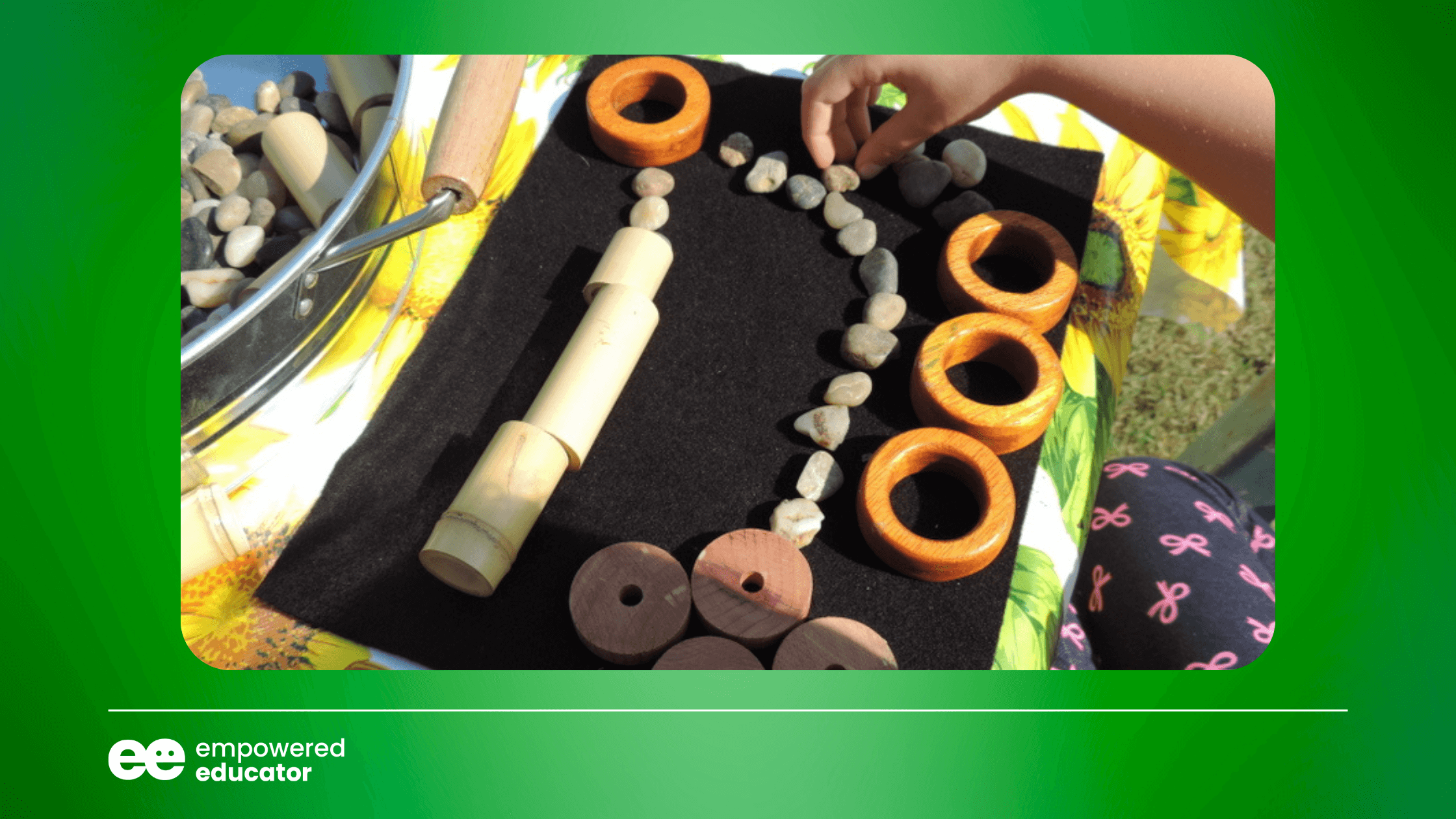

Maths Talk in Everyday Moments

- 1
Estimate group quantities before precisely counting totals. Check counts together.
- 3Compare measurable attributes like length, height, and capacity. Ask "Which is bigger/smaller?"
- 4Incorporate geometric vocabulary in everyday interactions and play.
- 5
Provide child-sized maps to discuss locations using position words during play.
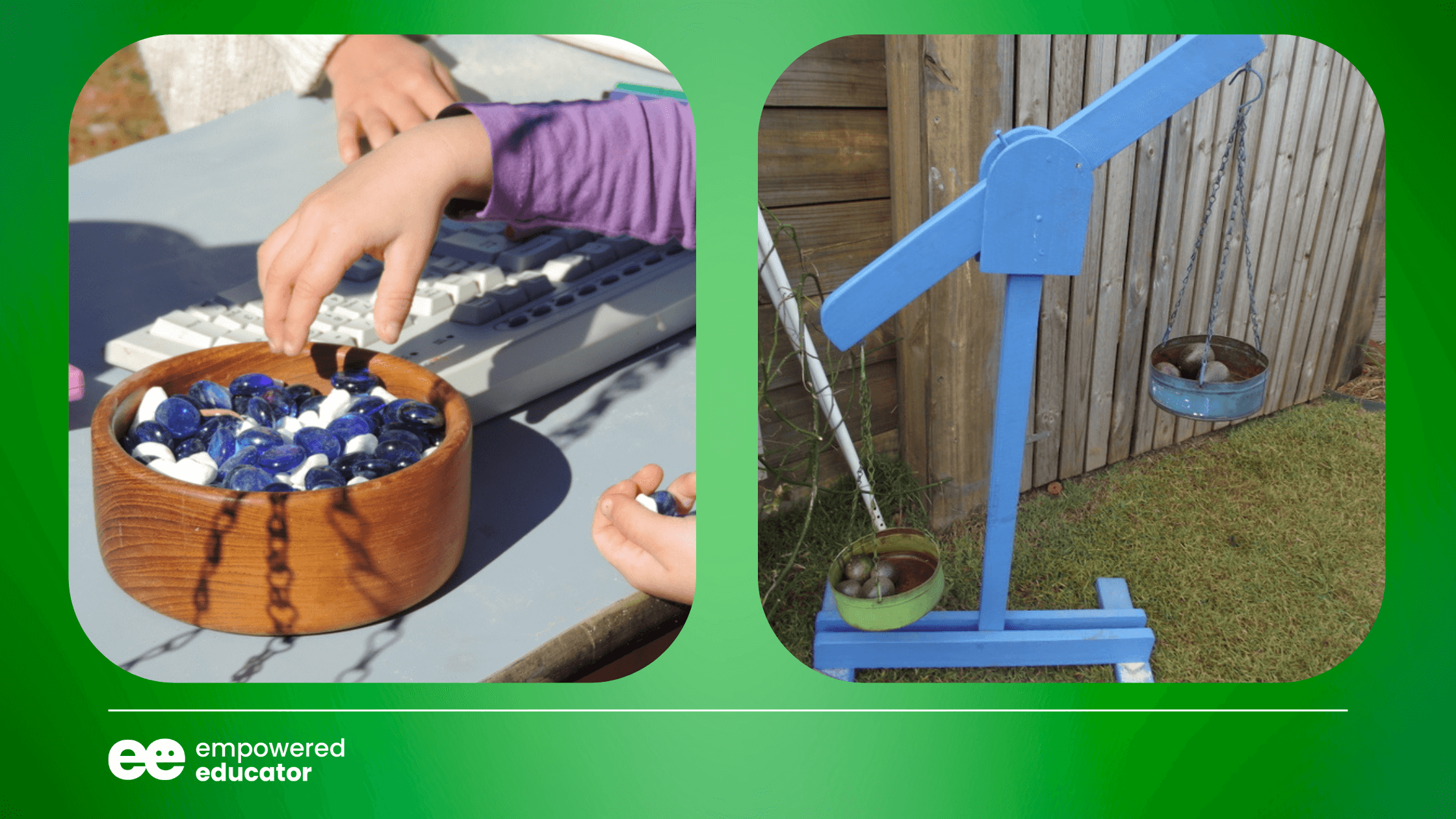
Love outdoor play as much as I do? Here are some fun ways to integrate simple maths concepts into your outdoor play experiences:












The key is integrating maths vocabulary naturally during outdoor investigations and explorations. Make it fun and hands-on for engaged maths learning!
How do you intentionally weave maths experiences into children's busy days? Let me know what you do in the comments below.

Connecting STEAM to the EYLF
STEAM learning through play inherently aligns with principles and practices within the Early Years Learning Framework (EYLF). It promotes identity, wellbeing, confidence, communication, critical thinking, and problem solving.
Adding these types of activities into your program plans will ensure you are supporting many of the EYLF's principles and outcomes for early childhood education. For example:






As an educator you can observe, document, and scaffold children's learning during STEAM play to inform forward planning and assess early childhood development across the milestones.
STEAM explorations also allow us to seamlessly blend intentional teaching moments and learning with wonder during the precious early years.

Bringing STEAM Learning to Life
Let the Discoveries Begin!
I began this blog post by asking you to envision how to turn ordinary moments into extraordinary STEAM learning adventures.
Now I’ve also given you a huge collection of hands-on science, technology, engineering, art and maths ideas and inspiration to help you actively engage young children through your planning and play provocations.
This collection represents just a small sample of the possibilities for discovery when we view play through a STEAM lens.
So where will you begin your own journey into purposeful STEAM integration?
Pick an area that sparks interest for you and reflect on how you might infuse more science, maths and engineering experiences into your everyday interactions and planned, intentional learning opportunities. Design invitations to create, build and innovate using art and technology.
I hope this post inspires you to incorporate more STEAM into your play based program and environments. Let me know how you go!


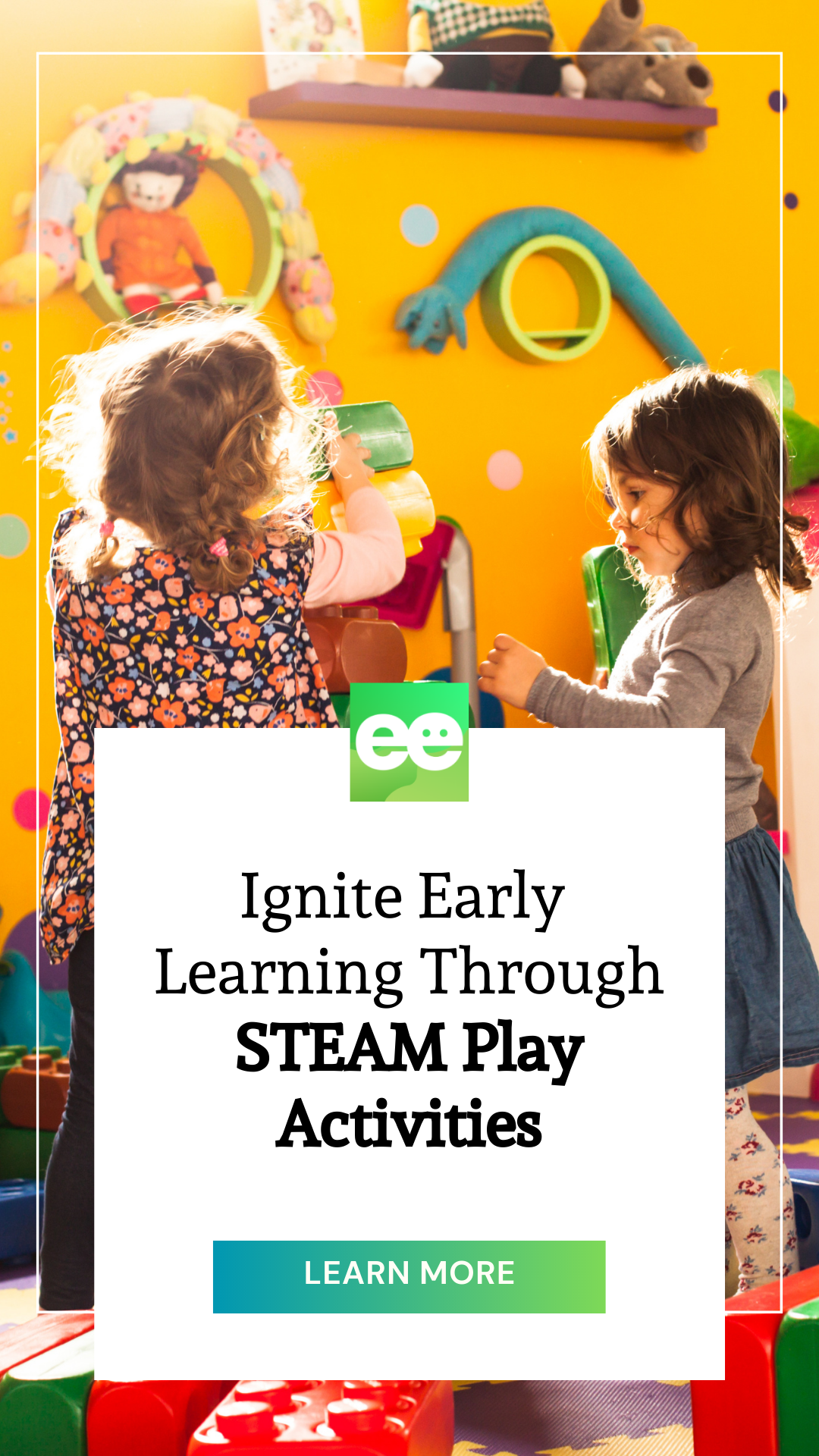
A Little About Me
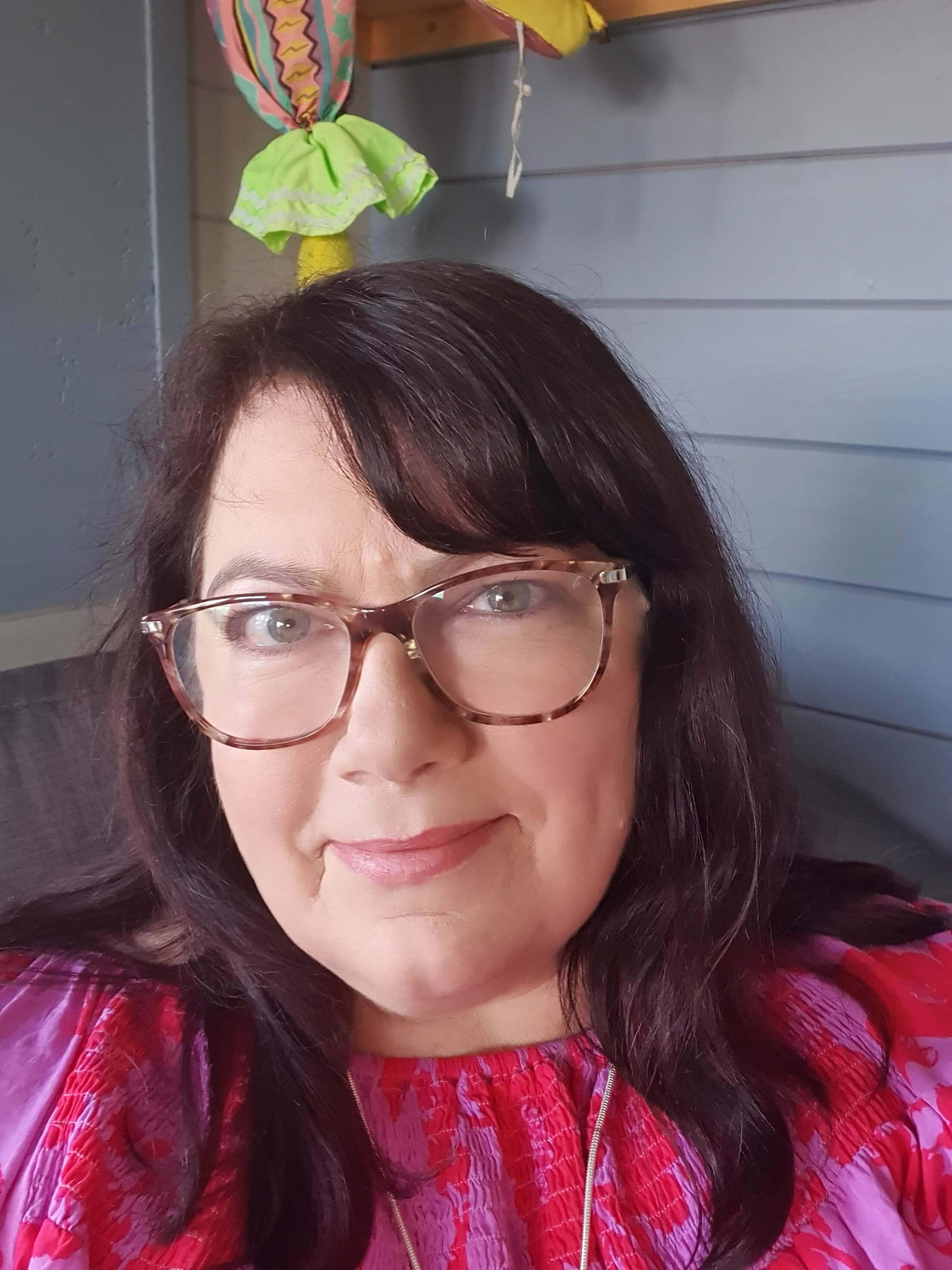
Jodie Clarke is an early childhood professional supporting educators who want and need to stay passionate about the work they do! She has 30 years hands-on experience in the early childhood and human services sectors across many different roles.
Jodie is mum to 3 in Australia and has already helped thousands of educators with their work through her popular blog posts, activity ideas, online training and e-books.


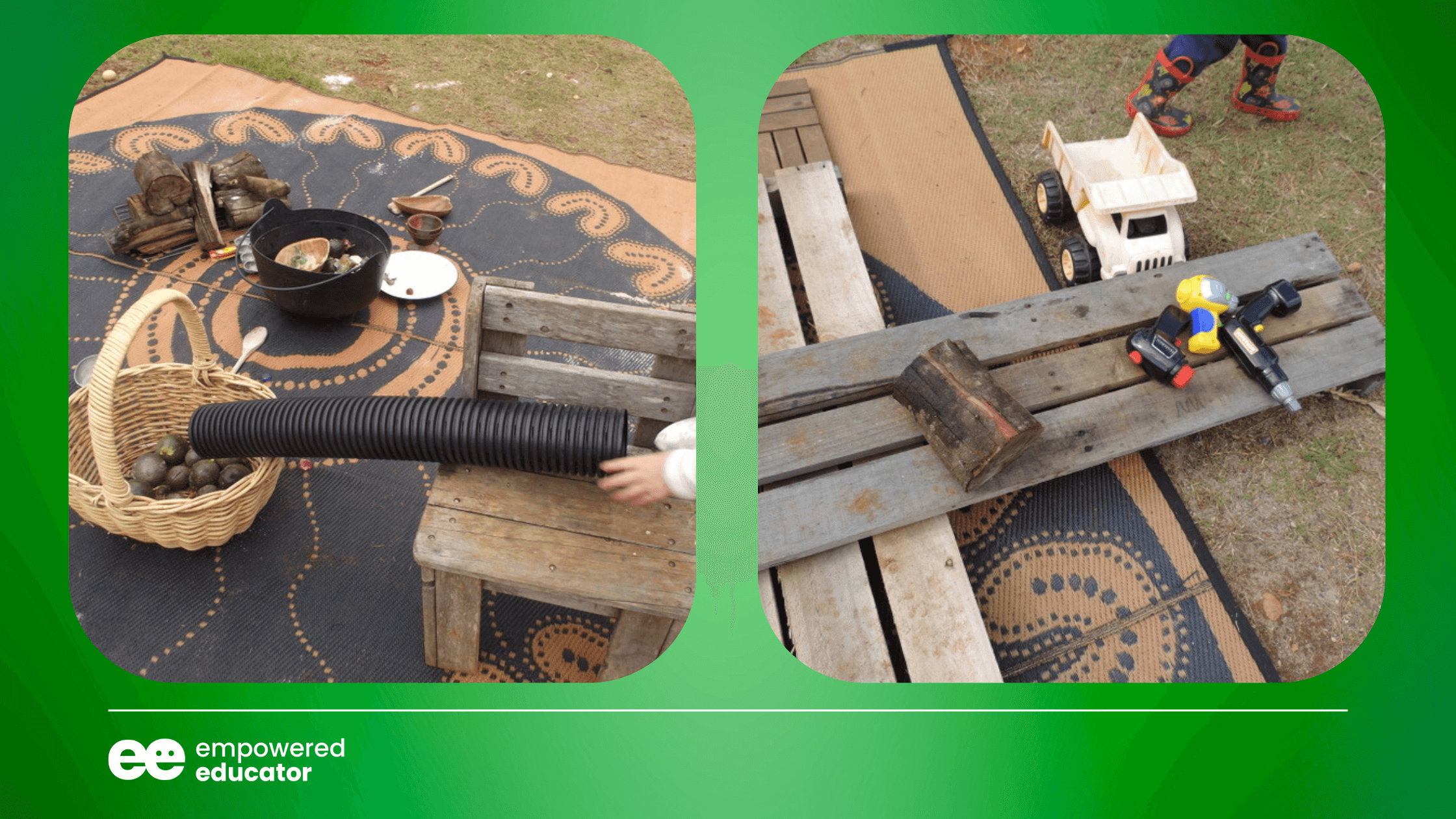

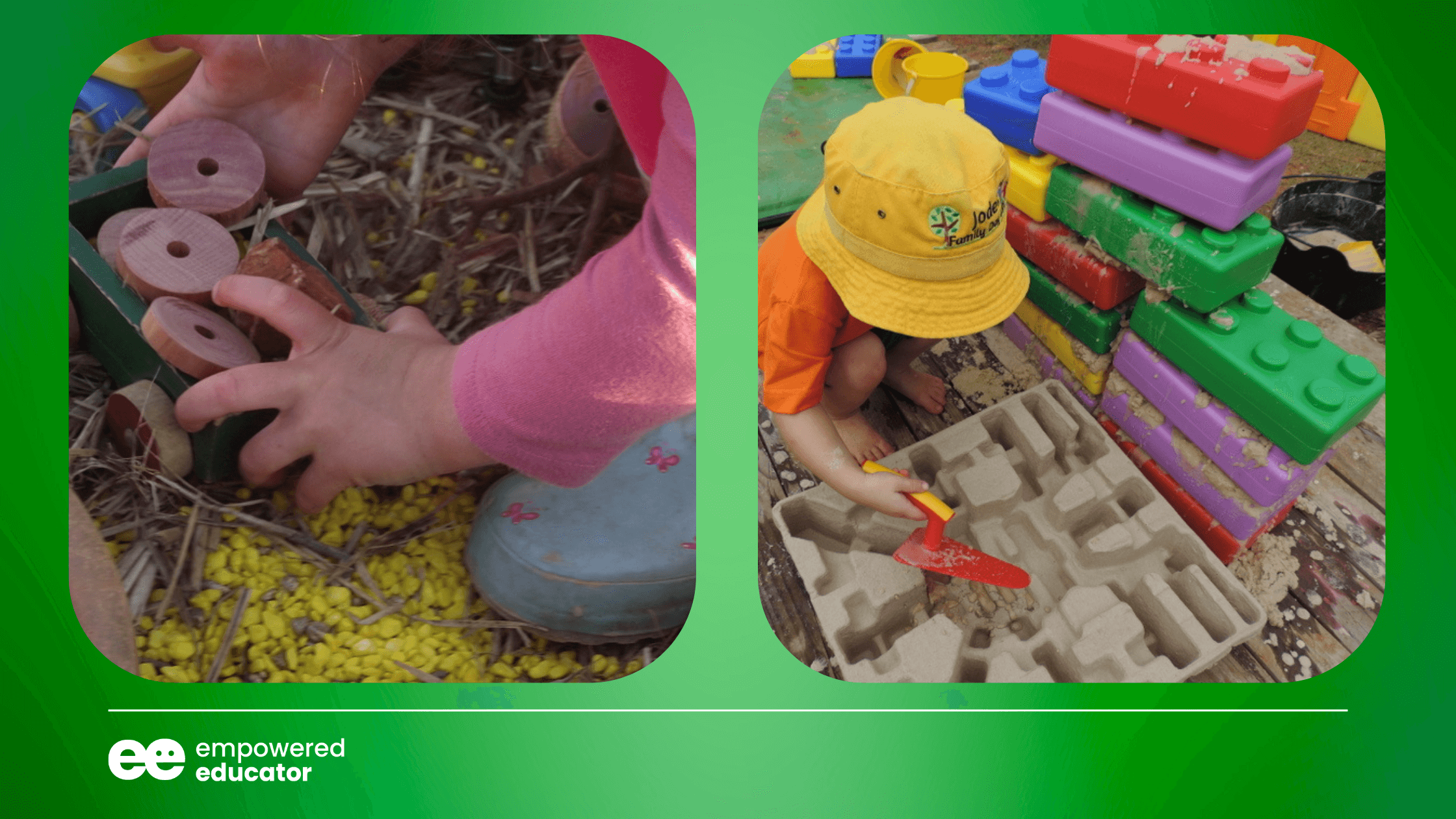
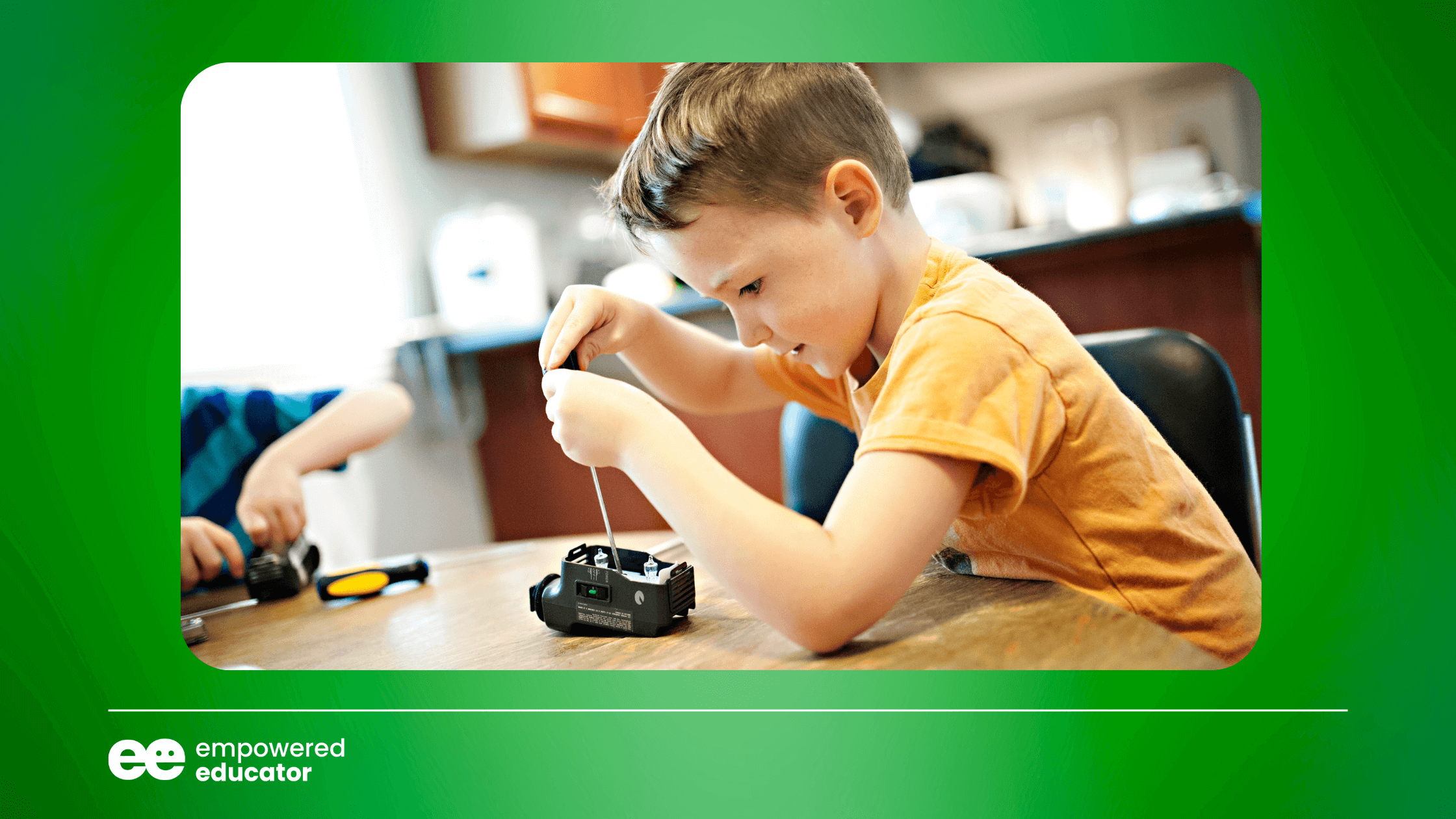



Leave a Reply